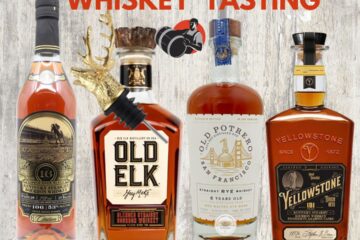Getting To Know Gin – Sip Happens!
Sip Happens is a podcast aiming to educate and empower consumers of wine, beer and spirits. In this episode, Kevin Brady and Lucas Turner discuss Gin, from history, to production, to different types of Gin, and more!
Gin – The Cocktail Spirit
There are more cocktail recipes for gin than any other distilled spirit. It is commonly being used as a secondary spirit in new cocktails to bring out unique characteristics of other spirits such as whiskeys and vodkas.
Click here to watch our Gin Cocktail Recipe Video
How Did Gin Become A Common Drink?
A lot of the initial spread of Gin was caused by soldiers in the 30 years war. Much of the 30 years war was fought in Holland. During that time, the british noticed the Dutch soldiers drinking a distilled spirit. This spirit had a calming effect on the Dutch soldiers, and was adopted by the British, they eventually referred to this spirit (Gin) as Dutch courage.
The British quickly adapted their own style of Gin following the 30 years war, creating the “London Dry Gin.” Soon after, england went through the “Gin Craze.” At one time in the early 18th century, there was over 7000 shops selling Gin in London alone.
The Gin Craze
To keep up with demand during the Gin Craze, underground establishments known as “Gin Mills” popped up across England. People who wanted to drink Gin could easily find these Gin Mills by looking for images of a Black Cat posted in the area.
Gin mills made what was called “Old Tom” Gin. Since this gin was poorly made, they added sweeteners to make it more palatable. Today, Old Tom is a term that refers to a certain style of sweeter Gin, but it is no longer poor quality like it was in the 18th century.
Eventually, regulations were created that included the makers of Gin. This raised the cost and quality of Gin, and increased cooperation between wholesalers, manufacturers, etc.
Convenient Reasons to Drink Gin
While the British navy was out conquering new territories, they would drink Quinine to fight effects of malaria. But the quinine was just too bitter for most, and soon after, tonic was invented. Even after the addition of Tonic to quinine, it was still unpleasant to drink, to make it more tolerable, Gin was added. The sailors would also add lemon and orange peels to the drink to help prevent scurvy.
Navy Strength Gin
Navy Strength Gin has a higher alcohol percentage than traditional gin (114 proof). The percentage was raised so that if the Gin ever spilled onto the gunpowder, the soldiers would still be able to use it in their guns.
What Is Gin?
To be legally called “Gin” Juniper has to be the dominant flavor, although it can contain all kinds of different botanicals. In fact some gins use over 30 botanicals. You can usually read about what types of botanicals a Gin has by reading the label, or ask an employee at the store!
To hear the rest of the episodes go to cooperwineandspirits.com/podcasts


